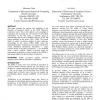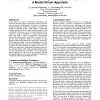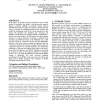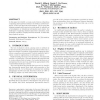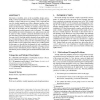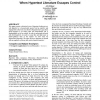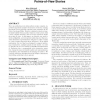HT
1999
ACM
14 years 11 months ago
1999
ACM
This paper presents the analysis and modelling of the literature of hypertext based on the ACM Hypertext conference series. This work explores a new paradigm of organising and acc...
HT
2000
ACM
14 years 12 months ago
2000
ACM
Software components for distance and just-in-time (JIT) learning are an increasingly common method of encouraging reuse and facilitating the development process[58], but no analog...
HT
2004
ACM
15 years 27 days ago
2004
ACM
In this paper, we present a model-driven methodology and toolset for automatic generation of hypertext system repositories. Our code generator, called Bamboo, is based on a Contai...
HT
2004
ACM
15 years 27 days ago
2004
ACM
In this paper, we describe Chrysant, a hypertext version control system for embedded link models. Chrysant provides generalpurpose versioning capability to hypertext systems with ...
HT
2004
ACM
15 years 27 days ago
2004
ACM
In this paper we identify a common aim between ubiquitous computing and hypertext systems: the desire to present navigable, located and structured information. We propose that exi...
HT
2004
ACM
15 years 27 days ago
2004
ACM
This hypertext reports on issues in hypertext rhetoric and presentation that arise in composing a large argumentative hypertext associated with a book version of the same project....
ASSETS
2004
ACM
15 years 27 days ago
2004
ACM
Movement, or mobility, is key to the accessibility, design, and usability of many hypermedia resources (websites); and key to good mobility is context and preview by probing. This...
HT
2005
ACM
15 years 1 months ago
2005
ACM
This paper presents a historical view of hypertext looking at preweb hypertext as a domesticated species bred in captivity, and arguing that on the web, some breeds of hypertext h...
HT
2005
ACM
15 years 1 months ago
2005
ACM
Hypertext can be seen as a logic representation, where semantics are encoded in both the textual nodes and the graph of links. Systems that have a very formal representation of th...
HT
2009
ACM
15 years 2 months ago
2009
ACM
How can authoring tools help authors create complex, innovative hypertext narrative structures? Tools for creating hypertext fiction typically represent such narratives in the fo...
